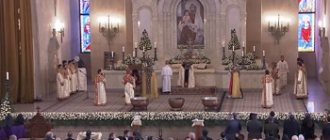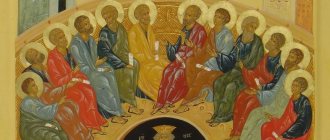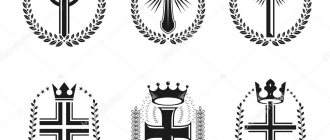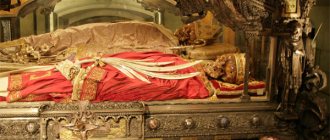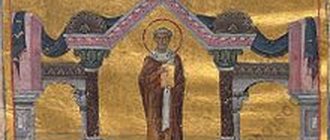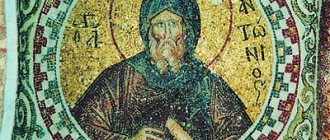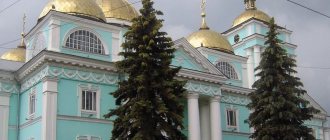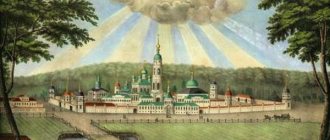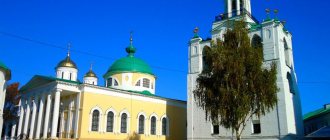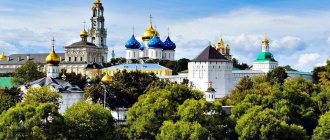Echmiadzin is a monastery of the Armenian Apostolic Church, located in the city of Vagharshapat, Armavir region. In the period 303-484, the throne of the Supreme Patriarch of the Catholicos of All Armenians was located here. Then there was a break until 1441, since then the Holy Mother See of Etchmiadzin is again the spiritual capital of Armenians all over the world. The residence of the head of the Armenian Apostolic Church, the Catholicos, is located here.
At the beginning of the 4th century, a cathedral was founded in Vagharshapat. Its treasury now contains the tip of the Holy Spear, which, according to legend, pierced Jesus Christ on the cross, and other priceless shrines of Christianity. The facade of the cathedral is decorated with the finest stone carvings, and its interior amazes with the elegance of the paintings and harmony, the colors are very rich, which is why the paintings seem to transport you to the Garden of Eden.
From the history of Vagharshapat
In 163, the Romans destroyed Artashat, after which the political, cultural, and then religious and educational center of the country moved to Vagharshapat.
In 301, Christianity became the state religion of Armenia.
According to legend, the first Patriarch of Armenia Grigor Lusavorich (the Enlightener) dreamed that Christ came down from heaven and indicated the place where a cathedral should be erected. This place was not a wasteland; in this place there was an ancient pagan temple. It was here that in 303 a church was founded, called Etchmiadzin, which can be translated from Armenian as “the place of the descent of the Only Begotten.”
The originally erected temple was wooden and had the shape of a basilica. In the 5th century, Prince Vahane Mamikonyane rebuilt it in the form of a cross-domed church. The cathedral acquired its modern outline after reconstruction at the beginning of the 7th century, during the time of Catholicos Komitas and Nerses III the Builder.
Armenia has endured centuries of adversity, and Etchmiadzin could have been destroyed many times.
For example, during the Russian-Persian War, wounded Russian soldiers took refuge in the monastery, and it was besieged by the Persians. The Russian detachment of A. Krasovsky, together with the Armenian militia, incredibly defeated the enemy forces 15 times superior in the Battle of Oshakan and entered the monastery. At this time, the clergy with the Archbishop of Etchmiadzin Nerses Ashtaraketsi, residents and soldiers had no choice but to pray for victory in front of the Holy Lance. Victory has come. In 1828, Eastern Armenia was liberated from the Persians.
In 1918, there was a war between Armenia and Turkey, the Turkish hordes were located a few kilometers from Etchmiadzin and their intentions were very bad. Catholicos Gevorg V Surenyants, despite the mortal danger, refused to leave Etchmiadzin and ordered the organization of a detachment of clergy to participate in the battle against the Turks. The detachment consisted of 300 people.
On May 21–24, 1918, during the Battle of Sardarapat, the Armenians defeated the Turks and drove them back from the walls of Holy Etchmiadzin. Subsequently, success was consolidated, and Armenia was saved from destruction. Moreover, on May 28, 1918, Arenia revived its statehood (after almost 600 years).
During the Soviet years, Vagharshapat again grew from an abandoned village to a large settlement, and then became a city. The Etchmiadzin Monastery and churches were renovated. They dug up Zvartnots, which was then covered with earth.
In 1945 the city was renamed Etchmiadzin, but in 1995 the former name Vagharshapat was returned. In 2000, all the temples of Vagharshapat were included in the UNESCO lists.
Etchmiadzin Cathedral
The main Etchmiadzin Cathedral was built over more than one century. This is not even a cathedral, but a huge complex of national importance - the residence of the Catholicos, a theological seminary, winter and summer refectories, a hotel, a museum.
In the 17th century, a new dome was erected over the cathedral and a three-tier bell tower was built in front of the western entrance.
In the 18th century, six-column rotundas were built over the southern, northern and eastern apses of the temple, thanks to which the cathedral acquired a five-domed crown. At the beginning of the 18th century, the cathedral was painted by the artist Nagashe Hovnatanyan. In the second half of the 18th century. it was supplemented by Nathan’s grandson, Ovnatan. The dynasty did not end there; the artist’s descendants continued work on decorating the temple. In 1782–1786 Hovnatan Hovnatanyan supplemented and updated the paintings of the cathedral made by his grandfather. He also painted more than a hundred paintings of Jesus, the Virgin Mary, saints and biblical scenes. A large number of these paintings still decorate the Etchmiadzin Cathedral. There are no frescoes on the walls of Armenian churches; they are decorated with paintings of saints.
In 1869, a sacristy was added to the east side to store precious relics and church utensils.
Even later, six-column rotundas were added to the temple on three sides. In the 20th century, the cathedral was restored. In the cathedral you can see an icon depicting 1.5 million Armenians - victims of the 1915-1923 genocide, canonized by the Armenian Church.
As in all Armenian churches, the Main Altar is located on the eastern part of the temple. There are three more altars in the Etchmiadzin Cathedral: two are located in the southern and northern parts, and the third was erected in the very place where, according to legend, the Lord struck with a golden hammer.
The brightest area of the temple is a domed square with twelve windows in a cylindrical drum and with plastic surfaces of the sails, reflecting rays of light penetrating from above.
Echmiadzin itself is not only a shrine of the Armenian Church, but also a symbol of Armenia. In Armenia there is even a unique day marked in the calendar - the day of the cathedral. This holiday is celebrated annually on Sunday, which occurs 64 days after Easter.
Relics of Saint Etchmiadzin
| Patriarchal eagle. |
The line snakes along the fence.
There is either a spring mood in the air, or the excitement of impatient anticipation. The A.S. Pushkin Museum of Fine Arts, with the support of the Armenian Embassy, opens the exhibition “Relics of Holy Etchmiadzin”, the exhibition of which is located in hall No. 31. 2006 is celebrated in our country as the year of Armenia in Russia. The first event within the framework of this celebration was the opening of this exhibition. True, Moscow was forced to concede the palm to St. Petersburg this time. There, the exhibition took place in February in the Apollo Hall of the Winter Palace.
The basis of the exhibition is a collection of monuments of the 10th-19th centuries from four museums of Etchmiadzin: the Golden Storeroom, the Cathedral Museum, the Manukyan Treasury Museum, the Old and New Patriarchal Residences. The presented relics are gifts from believers and gifts from emperors, saved church treasures.
Reliquaries are perhaps of greatest value. The folded reliquary “Hotakeratz Surb Nshan” (Holy Cross from the Monastery of Hotakerats) under one of the transparent stones hides a particle of the True Cross of the Lord. According to the legend mentioned in the “History of Armenia” by Movses Khorenatsi, Emperor Constantine sent his mother Queen Helena to retrieve the Holy Cross, which she discovered in 326. Even then, in Byzantium, a special form of reliquary (staurotek) appeared, in the cruciform recesses of which particles of the True Cross were placed. As for Armenia, the types of stavrotek did not have a specific form. There were crosses and triptychs here. And all these shrines were called “Surb nshan” (Holy Cross) with the addition of the name of the monastery, in the main temple of which the reliquary was kept on the throne.
“Hotakerats Surb Nshan” has the form of a triptych. Silver and gilded plates with chasing are attached to the wooden part. At the bottom there is an entry with the date and name of the customer: “The Holy Cross of the Lord was the protector of Eachi. 1300." Eachi, the grandson of the legendary hero of Armenian folk tales Proshan, became famous for starting the construction of the Astvatsatsin Spitakavor monastery. In the center of the reliquary there is a cross inlaid with large convex colored stones. A priceless shrine is placed under one of these transparent cabochons.
| Folding reliquary with a piece of Noah's Ark. Kanaker. 1968 |
A piece of Noah's Ark is placed in another fold.
This reliquary itself dates back to 1698. On the silver doors there is a chased image of an angel handing over a relic to Saint Hakob of Mtsibin (Jacob of Nizibin). According to legend, St. Hakob found a piece of Noah's Ark on Mount Ararat. In 1768, Catherine II received as a gift a fragment of a particle of Noah's Ark, which was broken off from one of the corners of the relic. The Empress did not remain in debt, and then presented Catholicos Simeon I with a patriarchal double-headed eagle, decorated with precious stones and enamels. Reliquaries in the shape of a hand, made using the techniques of chasing, casting and filigree with the inclusion of
multicolor stones and enamels. There are two of them at the exhibition: the hand of St. Apostle Thaddeus with relics and the hand of St. Akop Mtsbinsky.
Listing the amazing relics brought to Moscow, it is difficult to single out something more significant. These are all creations with priceless content and ongoing stories. And the Radiant Cross of the tenth century from Ani, and the incense of the eighteenth century from Vagharshapat in the form of a five-domed temple, and the gilded staff of the archimandrite of 1781 with a pommel in the form of a serpent with ruby eyes, and a vessel for peace in the form of a dove.
| Four Gospels. Armen-Ler, Adana, Cilicia.1293 |
If you celebrate something in particular, it would probably be books.
The Cilician Four Gospels were written in 1293 in Armen-Ler by linguist, musicologist and calligrapher Gevorg Skevratsi. Gevorg worked in the largest cultural center of Cilicia - the Skevrsky monastery. The artist Simeon worked with him on the Four Gospels. One of the spreads, the miniature of which depicts the Evangelist Luke, simply rings with piercing glass azure, hot purple and warm gold. More than seven hundred years have passed, and the paints remain surprisingly fresh, as if they had never dried out at all. Exquisite coloring, subtle handwriting of the Skevros miniature, recognizable by specialists, and the mysterious bologir, the same rounded script for which Cilicia was famous. It seems impossible to stop admiring the silk embroidery of a velvet curtain from Vagharshapat, a silk curtain from Agulis inlaid with precious stones, or an 18th-century Chinese chasuble depicting Noah's Ark on top of Mount Ararat and Saint Etchmiadzin in the radiance of two suns.
The integrity and completeness of the exhibition is given by large-format photographs of the Cathedral of the Mother See of Holy Etchmiadzin. Mother See of Etchmiadzin is the center of the Armenian Apostolic Church. In fact, this is a monastery, on the territory of which (60 thousand sq.m.) there is a theological academy, the residence of the Catholicos of all Armenians, a synod, a library, a book depository and, in fact, the Cathedral of St. Etchmiadzin itself, founded in 301. From the photographs of the interior, you can get an idea of the rich decoration of the cathedral, the amazing floral patterns in the paintings made in 1721 by the artist Nagash Hovnatan. There is a photograph of the marble altar of the temple, which may surprise the Orthodox by the absence of an altar barrier and a large icon of the Mother of God and Child in the center. Here we also see a view of Mount Ararat and the Khor Virap monastery, which was once the place of imprisonment of Grigor Lusavorich (the Enlightener) who brought Christianity to Armenia.
The exhibition will continue at the Pushkin Museum. Pushkin until April 20.
Museum
The Treasury of Etchmiadzin is the name of the museum. It was opened in 1955, and this name was chosen for a reason. The museum contains priceless relics collected or received as gifts from people all over the world!
The museum houses holy relics, church clothes embroidered with gold and pearls, staffs and crosses of Catholicos, numerous ritual objects made of gold, silver, and ivory. Here are the chairs of the Catholicos, decorated with mother-of-pearl and ivory, and with figures cast in silver. The most ancient examples of art of the past were also kept in Etchmiadzin. There were also ancient manuscripts and miniatures, which were later transported to Yerevan.
The so-called Spear of Destiny. According to legend, Christ was killed with this or a similar spear. Thaddeus brought the relic to Armenia when he preached in this land. Now there are four of them in the world - in Etchmiadzin, Vienna, the Vatican and Poland, and all four, of course, claim to be called “real”! In Armenian, the spear is “Geghard”, and in the Middle Ages it was kept far in the mountains, in the unique monastery complex of the same name.
Three pieces of the Cross on which Christ was crucified are kept in Etchmiadzin. One of the relics is under a transparent stone in the middle of this large cross from the 10th century, which belonged to the Armenian king Ashot the Iron. This is his battle cross.
The right hand with the relics of John the Baptist. The power was presented to Etchmiadzin by the Pope in 2001.
Open altar
Another attraction of Etchmiadzin is the so-called “Open Altar”. This modern building is one of the last in the complex. This altar appeared in 2001, in honor of the 1700th anniversary of the adoption of Christianity, and is located in front of the entrance to the courtyard of the complex. During the opening, Catholicos of All Armenians Karekin II and Pope John Paul II held a joint service there.
The road to this arch is decorated with ancient khachkars - steles with a carved image of a cross, collected from all over Armenia.
What to see
In addition to the altars, of which there are four inside and one outside, as described above, as well as the museum, there are other interesting places in Etchmiadzin.
There are many khachkars on the territory of the monastery. Among them are Amenaprkich (1279), and the XVII khachkar, transported from the cemetery of Old Jugha, and the recently installed modern khachkar for the victims of the 1915 genocide.
Here, in the courtyard of the monastery, is the palace of the Catholicos of All Armenians. At the entrance to the residence stands the “Gate of Trdat”. They were rebuilt many times, but stone blocks from the 4th century are still preserved at their base. It is believed that once upon a time there was a royal palace on the site of this gate.
The Theological Academy is also located on the territory of the monastery. This is the only educational institution of this type in the world. There are not many listeners - 50 people. The main subjects studied here are logic, rhetoric, psychology, world history, philosophy and languages. Of the languages, ancient Greek, Russian, English, Armenian - both modern and ancient Armenian - are studied especially carefully.
On the territory of Etchmiadzin there is also a seminary building built in the 19th century. Now there is an art museum here, which displays a collection of works by major artists of the 20th century: Saryan, Khanjyan, Kochar.
Other churches of Etchmiadzin
Etchmiadzin is called the city of churches. In addition to the Etchmiadzin Monastery, there are 3 more ancient monuments here. According to legend, these temples were created in honor of the martyrs - the first Christian women who fled here from Rome from the persecution of the emperor. The temples are named:
- Surb Hripsime,
- Surb Gayane
- Surb Shoghakat.
The first of their temples was built in 618. This is a majestic and slender structure. Inside, the church has the shape of a rectangle, into which a cross is inscribed, formed by four semicircular apses.
From one of the chapels located in the corners, you can enter the crypt located under the altar, where, according to legend, Hripsime was buried. The interior decoration is very modest. In 1790, a two-tier bell tower with an eight-column belfry was added to the church. In the narthex of the church, the throne gates of 1741, inlaid with mother-of-pearl, are kept.
The Surb Gayane Temple was built later, in 630, on the site of a chapel of the 4th century. It is considered one of the best monuments of Armenian architecture. The external appearance of the temple is distinguished by its slender proportions. The austere and laconic building of the church is decorated only with ornaments located on the frames of doors and windows.
The room is rectangular in shape. Inside there are two rows of columns that divide the interior space into three parts. The columns are designed to carry the weight of the dome, which rests on a slender octagonal drum. In 1652 it was thoroughly renovated, and in 1683 a gallery was added to it for the burial of hierarchs of the Armenian Church. On the outer domes of the gallery there are elegant belfries. The interior details are decorated with ornamental carvings. Above the entrance there is a 17th-century mural depicting the birth of Christ.
The Surb Shoghakat Temple was built much later - in 1694. It has a peculiar architecture called a “dome hall”.
The church is entered by a single door, which opens from a vaulted gallery on the west side of the building. The dome of the church is supported from the inside by only a few columns. The builders did without intermediate supports thanks to careful calculations. The vaulted gallery above the entrance is topped with a six-columned belfry. The strict form of the details and decoration has much in common with the structure of the main cathedral and the Church of St. Hripsime.
Notes
- Dictionary of Fine Arts (inaccessible link) (inaccessible link since 06/14/2016 [1865 days])
- ↑ 12345
Encyclopedia of Early Christianity. - Routledge, 2013. - P. 227. Original text (English)Gregory the Illuminator established the center of the church in the Armenian capital city of Vagarshapat, later named Echmiadzin. It moved subsequently to Dvin from 484 to 901, then to Cilicia in 1116, and in 1441 back to Echmiadzin. This final move provoked a division between the catholicate of Echmiadzin and those who remained in the city of Sis in Cilicia, who formed the catholicate of Cilicia, which in the early twentieth century was transferred to Antylias in Lebanon.
- Mahé A., Mahé J.-P.
Grégoire de Narek. Tragédie. Matean olbergut'ean. Le Livre de Lamentation. - Peeters Publishers, 2000. - Vol. 584, Corpus Scriptorum Christianorum Orientalium. - P. 30.Original text (French)
Le siège patriarcal arménien fut successivement Valarsapat (314-484), Duin (484 - fin IXe s.), Att'amar (928-948), Argina (950-992), Ani (992-1046), sans compter le siège du catholicossat arméno-chalcédonien d'Awan (592-603) et les résidences occasionnelles de certains catholicos
- ↑ 12Ioanna Rapti.
Featuring the King: Rituals of Coronation and Burial in the Armenian Kingdom of Cilicia // Court Ceremonies and Rituals of Power in Byzantium and the Medieval Mediterranean: Comparative Perspectives / Edited by Alexander Beihammer, Stavroula Constantinou, Maria Parani. - BRILL, 2013. - P. 292.Original text (English)
This double importance survived the fall of the Cilician kingdom and determined the approaches to its history: as a mediterranean component, it was integrated along with Jerusalem in the intitulatio of the Lusignan kings, while its national Armenian significance continued to be embodied by the Catholicos ( Katołikos), the Armenian patriarch, up until 1441, when the holy see was established again in Etchmiadzin
in Greater Armenia
- Dzhagatspanyan E. D.
Vagharshapat Cathedrals // Orthodox Encyclopedia. - M.: Church and Scientific, 2003. - T. VI: “Bondarenko - Bartholomew of Edessa.” — P. 490-491. — 752 p. — 39,000 copies. — ISBN 5-89572-010-2. - Etchmiadzin // Encyclopedic Dictionary of Brockhaus and Efron: in 86 volumes (82 volumes and 4 additional). - St. Petersburg, 1890-1907.
- John Anthony McGuckin.
The Path of Christianity: The First Thousand Years. — InterVarsity Press, 2021.Original text (English)
At the Council of Vagharshapat in 491, and reiterated at the Council of Dvin in 527, the Chalcedonian decree was officially anathematized, and thus began the long ecclesiastical separation from the Byzantine and Latin traditions of theology
- AE Redgate.
The Armenians. - Blackwell, 2000. - P. 153.Original text (English)
Despite the various political and ecclesiastical problems Armenian intellectual life continued to thrive. The late fifth century onwards produced further translations into Armenian of Greek writers, including Aristotle and Plato, and the medical writers Hippocrates and Galen. Lazarus of P'arp studied in the Roman Empire, before being appointed, by the marzpan Vahan, as abbot of a monastery in Valarshapat.
- ↑ 123N. M. Tokarsky.
Architecture of ancient Armenia. - Er.: Publishing House of the Academy of Sciences of Armenia. SSR, 1946. - P. 61.Original text (Russian)
Comparing the information of ancient historians (Lazarus of Parp, Sebeos) about the first churches of Armenia and in particular about Etchmiadzin with the existing remains of church buildings of the first centuries of Christianity, we come to the conclusion that before the 7th century. Etchmiadzin was a common basilica for that time with a wooden roof, and only during a major reconstruction carried out by Komitas did it receive one, or maybe five domes. At that time it did not yet have protruding apses. They most likely appeared during the restoration of the cathedral, which lay already in the 13th century. in ruins, upon returning here in the 15th century. Catholic See from Cilicia.
- Agop Jack Hacikyan, Gabriel Basmajian, Edward S. Franchuk, Nourhan Ouzounian.
The Heritage of Armenian Literature: From the sixth to the eighteenth century. - Wayne State University Press, 2002. - Vol. II. - P. 908. - Sharakan. From Armenian poetry of the V-XV centuries. / Per. S. Zolyana. - Er.: Khorurdain Grokh, 1990. - P. 56.
- Ter-Mkrtichyan L. X.
Armenian sources about Central Asia in the 8th-18th centuries. - M.: Nauka, 1985. - P. 32. - Ejmiatsin
- article from Encyclopædia Iranica. S. Peter Cowe - ↑ 12Ejmiatsin
— article from Encyclopedia BritannicaOriginal text (English)
Upon the conversion of Armenia to Christianity about 300 CE, Vagarshapat became the residence of the Armenian patriarch. In 344 the town ceased to be the Armenian capital, and in 453 the patriarchal seat was removed elsewhere, but in 1441 the catholicos Kirakos brought back the seat to Vagarshapat, which thereafter remained the home of the “catholicos of all Armenians.”
- ↑ 1 2 3 Bozoyan A. A., Yuzbashyan K. N.
Armenian Apostolic Church // Orthodox Encyclopedia. - M.: Tserkovno-nauchny, 2001. - T. III: “Anthimiy - Athanasius.” — P. 329—355. — 752 p. — 40,000 copies. — ISBN 5-89572-008-0. - Nira Stone, Michael E. Stone.
The Armenians: Art, Culture and Religion. - Chester Beatty Library, 2007. - P. 29.Original text (English)
Cilicia's intimate relationship with the Franks, however, led to theological conflict A sustained effort was made by the Papacy to bring the Armenians into conformity with Roman Catholic doctrine and practice. This desire was paralleled by Latinizing tendencies of the royal house towards the end of the Cilician kingdom and continued for a century longer. By 1441, however, traditional fеorces in Armenia reasserted themselves and the seat of the Catholicos moved back to Armenia itself.
- M. Canard.
Arminiya // Encyclopaedia of Islam. - Leiden: BRILL, 1986. - T. 1. - P. 639.Original text (English)
The seat of the Katholikos was moved back to Etchmiadzin, near the Araxes, in the 9th/15th century.
- 8 ACADEMY OF SCIENCES OF THE ARMENIAN SSR INSTITUTE OF ARCHEOLOGY AND ETHNOGRAPHY G.M. GRIGORYAN ESSAYS ON THE HISTORY OF SYUNIK IX-XV centuries. PUBLISHING HOUSE OF THE ARMENIAN SSR AS YEREVAN 1990 BBK 63.3(2Ar)4 G 835 Published (unspecified)
. www.libed.ru. Date accessed: April 2, 2021. - Willem Floor, Edmund Herzig.
Iran and the World in the Safavid Age. - IBTauris, 2015. - P. 285.Original text (English)
This role grew after the mass deportation of the population of Eastern Armenia to Iran by Shah 'Abbas I in 1604–5. By his order the inhabitants of Erevan, Old Julfa, Agulis, Dasht and other commercial centers of Armenia were settled in the vicinity of Isfahan, where a new town called New Julfa (Nor Jugha in Armenian) emerged in the early seventeenth century.
- Travels in the East in the era of Catherine II. / Prepare Vigasin A. A., Karpyuk S. G. - M.: Eastern literature; School-press, 1995. - P. 270. - ISBN 5-02-017092-5
- Vasily Potto.
Caucasian War. Volume 3. Persian War 1826-1828. - Litres, 2017-09-05. — 715 p. — ISBN 9785425080998. - During the Russian-Persian War... (undefined)
. old.prlib.ru. Date of access: January 30, 2021. (inaccessible link) - Ilyinsky I.
Autonomy. // Encyclopedic Dictionary Pomegranate. I add. volume. - M., 1935. - Lobbied by the commander-in-chief of the Caucasian governorship, Prince Grigory Golitsyn.
